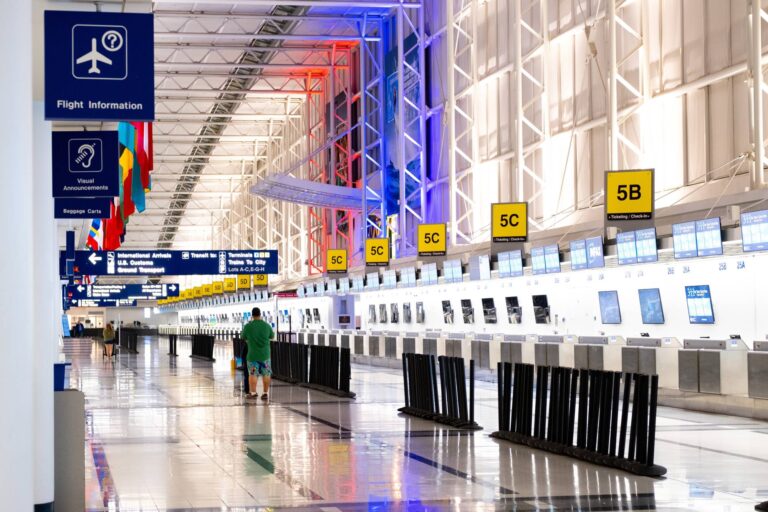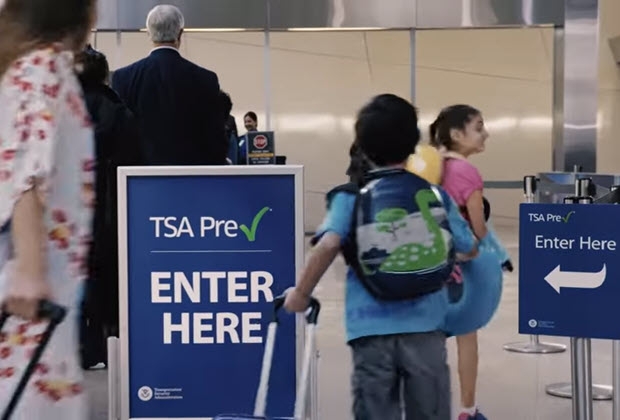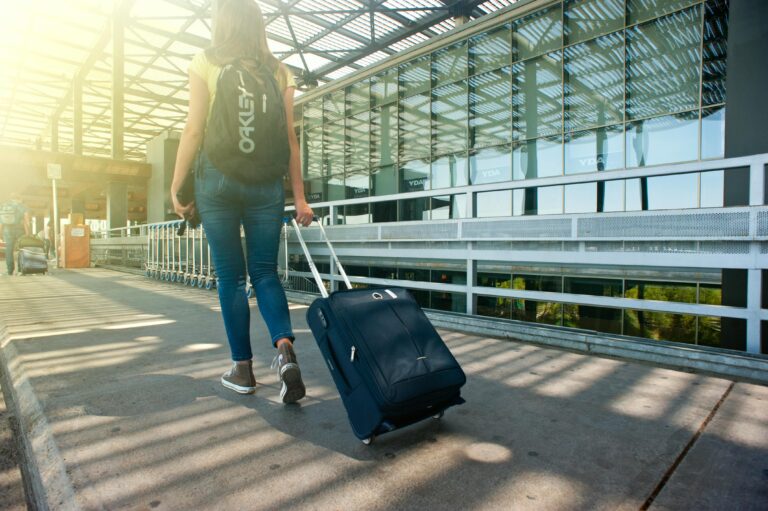How Does TSA PreCheck Work?

In 2021, over 1.5 million individuals embarked on flights across the United States, sharing a common experience—they all navigated through airport security.
However, a select group of travelers opted for a more streamlined security process by enrolling in the expedited screening program of TSA PreCheck.
So, what exactly does TSA PreCheck do, and how does it differ from Clear? In essence, it significantly minimizes the time travelers spend in security lines at international airports. This piece delves into the intricacies of TSA PreCheck benefits, the nuances of its policies, and why it could be the solution to your international airport security concerns.
TSA PreCheck: Substantial Advantages at a Budget-Friendly Cost
What Does TSA PreCheck Entail?
Enrolled TSA PreCheck travelers follow three simple steps to bypass lengthy security lines indefinitely—or, at the very least, until the culmination of their five-year enrollment period:
- Complete an online application.
- Schedule an appointment at a nearby enrollment center for in-person identity verification.
- Pay an $85 enrollment fee, with an additional $70 TSA PreCheck renewal fee if opting for another five years.
PreCheck participants can access a dedicated security checkpoint at major airports, offering more than just a shorter line. While travelers undergo a brief document screening, akin to other passengers, the physical screening process is notably expedited.
PreCheck travelers enjoy the privilege to:
- Keep shoes and belts on when passing through the metal detector.
- Retain laptops and large electronics within carry-on luggage.
- Leave liquids inside their bags.
Whether traveling frequently for business, pleasure, or both, the TSA PreCheck Lane ensures an accelerated security procedure, swiftly guiding you to your terminal.
The amalgamation of a reduced queue and an efficient screening process makes TSA PreCheck an invaluable asset for travelers.
The Details You Need to Know
While the TSA PreCheck program may seem like a dream come true, it’s essential for travelers to acquaint themselves with the finer details. Let’s delve into how the program influences those traveling with small children, the process of utilizing the Known Traveler Number, and the availability of PreCheck at every airport.
TSA PreCheck Benefits for Children: A Convenient Advantage
One of the many perks of TSA PreCheck is that children aged 12 and under, accompanying an adult enrolled in PreCheck, are exempt from the application process. Given that the application typically involves photo ID verification, a criterion most children don’t meet until their late teens, this inclusion makes utilizing the dedicated TSA PreCheck line especially convenient for families with young children.
However, if parents intend to send an unaccompanied child aged 12 and under on an adventure, the child must complete the application process to enjoy the benefits of TSA PreCheck while traveling alone. Additionally, they will need to enroll once they reach the age of 13 to continue using PreCheck independently.
While it’s possible to delay enrolling children under 12 in PreCheck for a few years, it’s advisable to enroll the entire family simultaneously for a seamless travel experience.
Known traveler numbers
After receiving TSA approval for your application, you can immediately start using PreCheck. However, to progress beyond the document inspection phase during airport security checks, it’s crucial to have a Known Traveler Number (KTN) listed on your boarding pass.
Key facts about the KTN include:
- TSA assigns the KTN once a traveler’s PreCheck application is approved.
- The KTN is unique to the traveler, similar to a Social Security Number.
- A traveler’s KTN remains valid for the entire enrollment period and remains unchanged when renewing the application at the end of the initial five-year term.
To enjoy the advantages of PreCheck and confirm your authorized participation in the program, it’s essential to input your KTN when purchasing airline tickets.
Availability of TSA PreCheck at Airports
TSA PreCheck is accessible at over 200 airports across the nation, with more than 80 airlines requiring a Known Traveler Number (KTN) during ticket purchases. Consequently, the likelihood of encountering an airport without a dedicated PreCheck security checkpoint is exceedingly low. Even smaller regional airports, such as Jackson Hole Airport (JAC) in Wyoming and Asheville Regional Airport (AVL) in North Carolina, are equipped with these facilities.
In the rare instance of an airport lacking a designated PreCheck line, travelers can still benefit from expedited service. Most security checkpoints feature a TSA agent or airline staff member at the end of the line who reviews travelers’ boarding passes. By presenting your boarding pass and indicating your KTN, you can swiftly move to the front of the line, enjoying the customary expedited treatment.
To skip the in-person hassle of obtaining TSA PreCheck, complete this TSA PreCheck® online application form to apply for TSA PreCheck instantly.
- TSA. Checkpoint Travel Numbers. https://www.tsa.gov/coronavirus/passenger-throughput
- TSA. PreCheck Airports and Airlines. https://www.tsa.gov/precheck/map





